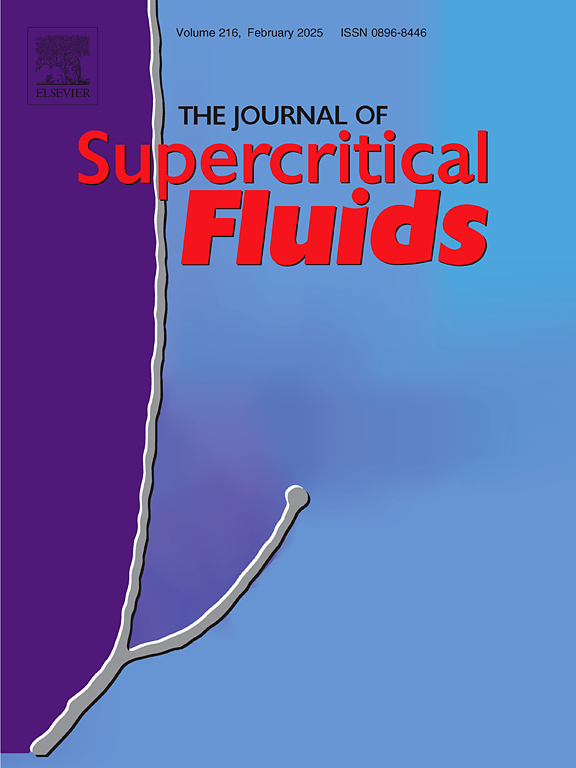重新评估二氧化碳在PMMA纳米细胞泡沫形成中的溶解度阈值及其对细胞结构的影响
IF 4.4
3区 工程技术
Q2 CHEMISTRY, PHYSICAL
引用次数: 0
摘要
纳米细胞泡沫由于其令人着迷的特性,最近受到了广泛的关注。先前的研究表明,分子量和二氧化碳溶解度是从商业级聚合物中获得纳米泡沫的关键,公认的智慧要求纳米细胞PMMA的溶解度超过30 wt%。本研究通过证明在中等饱和条件下(13.79 MPa和20°C),纳米细胞PMMA在显著降低溶解度的条件下成功生产,挑战了这一假设。实验用136 kg/mol -平均分子量的试剂级PMMA制备的纳米细胞PMMA平均细胞尺寸为140 nm,细胞密度为1.72 × 1015个细胞/cm3, CO2溶解度为25.89 wt%。各种饱和二氧化碳pmma的玻璃化转变温度预测模型在试剂级和商业级pmma之间显示出不同的精度。相对密度在泡沫饱和温差为60℃~ 80℃时达到最小值。随着发泡温度的升高,固体表皮厚度减小,而饱和温度的升高,过渡层厚度增大。本文章由计算机程序翻译,如有差异,请以英文原文为准。
Reevaluating CO2 solubility thresholds in PMMA nanocellular foam formation and its effect on cell structure
Nanocellular foams have recently received much interest due to their fascinating properties. Previous studies have shown that molecular weight and CO2 solubility are critical in obtaining nanocellular foams from commercial-grade polymers, with accepted wisdom requiring solubility exceeding 30 wt% for nanocellular PMMA generation. This study challenges this assumption by demonstrating successful production of nanocellular PMMA at significantly lower solubility under moderate saturation conditions (13.79 MPa and 20 °C). Experiments with reagent-grade PMMA of 136 kg/mol weight-average molecular weight produced nanocellular PMMA with an average cell size of 140 nm and cell density of 1.72 × 1015 cells/cm3 at CO2 solubility of 25.89 wt%. Various prediction models for glass transition temperature of CO2-saturated PMMAs exhibited different accuracies between reagent-grade versus commercial-grade PMMAs. The relative density reached minimum values at foaming-saturation temperature difference of 60 °C to 80 °C. Increasing foaming temperature decreased solid skin thickness, while higher saturation temperature increased transition layer thickness.
求助全文
通过发布文献求助,成功后即可免费获取论文全文。
去求助
来源期刊

Journal of Supercritical Fluids
工程技术-工程:化工
CiteScore
7.60
自引率
10.30%
发文量
236
审稿时长
56 days
期刊介绍:
The Journal of Supercritical Fluids is an international journal devoted to the fundamental and applied aspects of supercritical fluids and processes. Its aim is to provide a focused platform for academic and industrial researchers to report their findings and to have ready access to the advances in this rapidly growing field. Its coverage is multidisciplinary and includes both basic and applied topics.
Thermodynamics and phase equilibria, reaction kinetics and rate processes, thermal and transport properties, and all topics related to processing such as separations (extraction, fractionation, purification, chromatography) nucleation and impregnation are within the scope. Accounts of specific engineering applications such as those encountered in food, fuel, natural products, minerals, pharmaceuticals and polymer industries are included. Topics related to high pressure equipment design, analytical techniques, sensors, and process control methodologies are also within the scope of the journal.
 求助内容:
求助内容: 应助结果提醒方式:
应助结果提醒方式:


